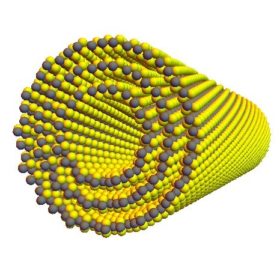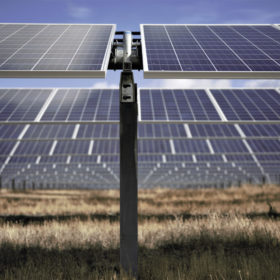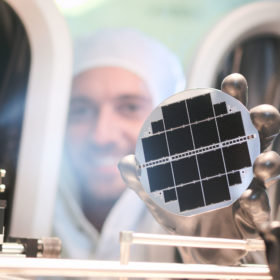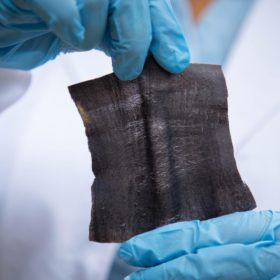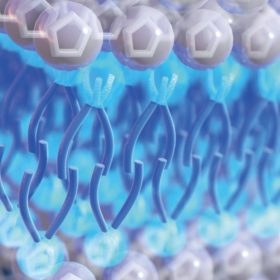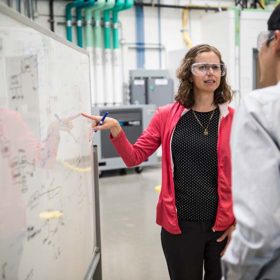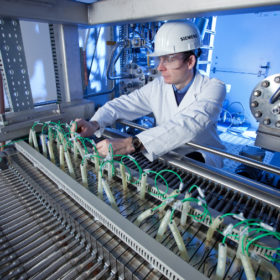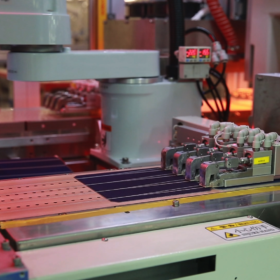Mini series: Creating a common language for solar in the energy mix
As solar comes to represent a larger proportion of the global energy mix, direct comparisons with conventional energy sources, and even with other renewables, are becoming more and more important. This is reflected in a bid by the United Nations Economic Commission for Europe’s (UNECE) Expert Group to standardize reporting on solar energy potential. Long Seng To, Royal Academy of Engineering research fellow at Loughborough University, and part of the UNECE solar energy subgroup, discusses the draft standards.
Scientists discover photovoltaic nanotubes
An international team of researchers led by the University of Tokyo has discovered a new material which, when rolled into a nanotube, generates an electric current if exposed to light. If magnified and scaled up, say the scientists, the technology could be used in future high-efficiency solar devices.
IHS Markit: Trackers to account for a third of PV installations
New analysis predicts more than 150 GW of tracker capacity will be installed in the next five years – around a third of all ground mount projects up to 2024. Rapid growth in Europe, the Middle East and Africa; and the better cost structures possible from combining trackers and bifacial modules are singled out as key trends.
Fraunhofer ISE achieves 34.1% efficiency with triple junction cell
Scientists at Germany’s Fraunhofer Institute for Solar Energy Systems have broken two of their own records for cell efficiency, working with silicon and III-V material tandem cells. The institute hit 34.1% on a triple junction cell using wafer bonding technology and 24.3% by directly depositing III-V layers onto a silicon solar cell.
A graphene-based supercapacitor that’s also…. a t-shirt?
Scientists at the Royal Melbourne Institute of Technology have developed a method for producing a ‘smart fabric’ with a supercapacitor energy storage device embedded in it. Its developers say it can be readily integrated with a solar cell or used to power wearable technology.
Nanowire mesh offers better cell performance and lower costs
A new method of creating an ordered mesh of nanowires, developed by scientists at the Lawrence Livermore National Laboratory in the United States, could lead to the creation of more efficient transparent electrode layers in solar cells – and the elimination of a rare material from the manufacturing process.
‘New and strange properties’ provide a boost to energy storage
MIT scientists have developed a class of liquid electrolyte with properties they say could open up new possibilities for improving the performance and stability of lithium batteries and supercapacitors.
Stitching together the grid of the future
A vision of a decentralized, renewable-powered electricity grid is being brought a step closer by scientists at the U.S. National Renewable Energy Laboratory. Their project, Autonomous Energy Grids, aims to take an overarching look at the solutions that will power this grid of the future, and to fill any gaps that appear between them.
A close look at nature could lead to cheaper hydrogen
Scientists at the Australia National University have observed a key stage in the process of photosynthesis which could be copied to greatly increase the efficiency of sunlight-powered water splitting processes used to produce hydrogen.
Hanergy sets new efficiency record for heterojunction cell
Chinese thin film producer Hanergy has set a new record of 24.85% module efficiency for silicon heterojunction technology. The record was achieved at the company’s research & development center in Chengdu, China, and has been confirmed by the Institute for Solar Energy Research in Hamelin, Germany.


